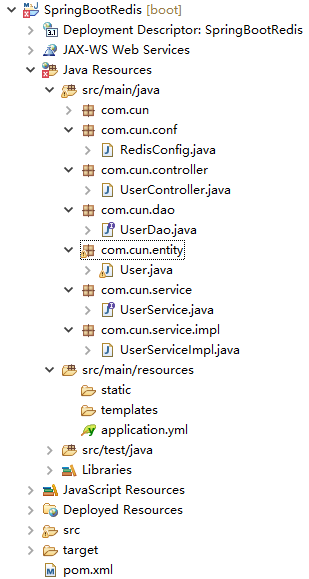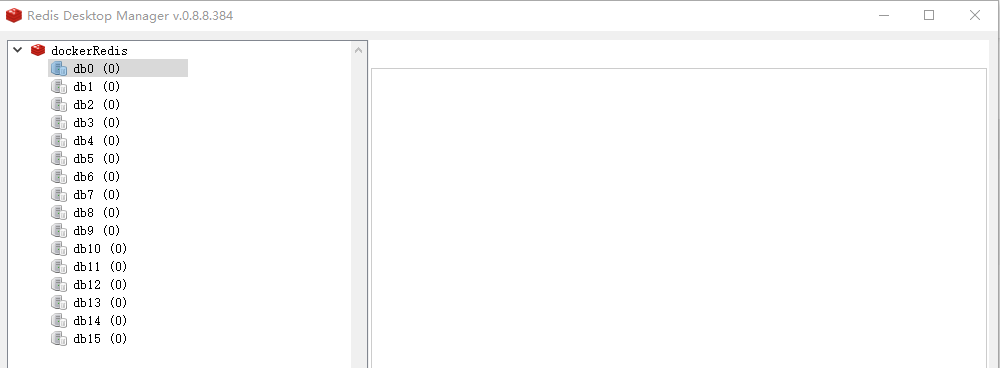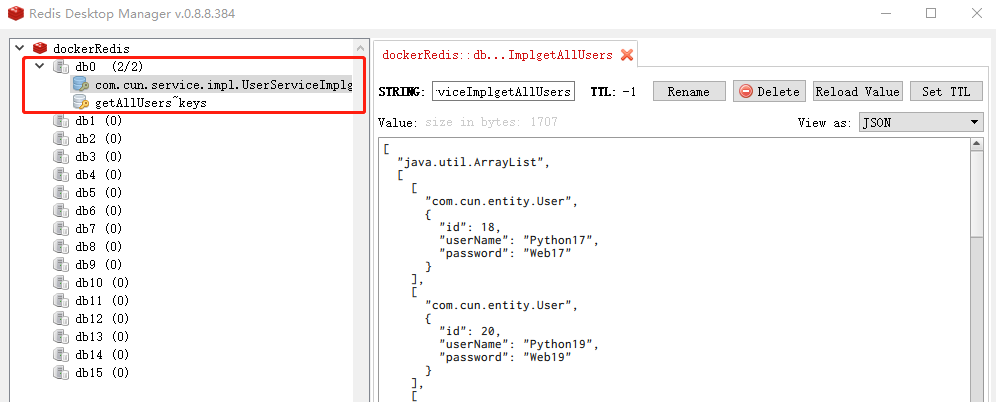I. Preface
Select is the most frequently used in the database, and it is basically the same every time. update, delete and insert are not used as frequently as select, and they are basically different every time. In order to reduce the pressure of the database, it is necessary to use cache for select. In the past, Ehcache was used for caching, but it has a very obvious disadvantage, that is, there is no ip or port, but the path is used, so it is not easy to share the cache. So using Redis for caching is the best choice.
Two, code

1,entity
package com.cun.entity;
import javax.persistence.Column;
import javax.persistence.Entity;
import javax.persistence.GeneratedValue;
import javax.persistence.Id;
import javax.persistence.Table;
/**
* User entity
* @author linhongcun
*
*/
@Entity
@Table(name = "user")
public class User{
@Id
@GeneratedValue
private Integer id;
@Column(length = 20)
private String userName;
@Column(length = 20)
private String password;
public Integer getId() {
return id;
}
public void setId(Integer id) {
this.id = id;
}
public String getUserName() {
return userName;
}
public void setUserName(String userName) {
this.userName = userName;
}
public String getPassword() {
return password;
}
public void setPassword(String password) {
this.password = password;
}
}
2. dao interface
package com.cun.dao;
import org.springframework.data.jpa.repository.JpaRepository;
import org.springframework.data.jpa.repository.JpaSpecificationExecutor;
import com.cun.entity.User;
/**
* User dao interface
* @author linhongcun
*
*/
public interface UserDao extends JpaRepository<User, Integer>,JpaSpecificationExecutor<User>{
}
3. Service interface
package com.cun.service;
import java.util.List;
import com.cun.entity.User;
public interface UserService {
/**
* Get all users
* @return
*/
List<User> getAllUsers();
}
4. Service implementation class
package com.cun.service.impl;
import java.util.List;
import org.springframework.beans.factory.annotation.Autowired;
import org.springframework.cache.annotation.CacheConfig;
import org.springframework.cache.annotation.Cacheable;
import org.springframework.stereotype.Service;
import com.cun.dao.UserDao;
import com.cun.entity.User;
import com.cun.service.UserService;
@Service
@CacheConfig(cacheNames = "userService")
public class UserServiceImpl implements UserService {
@Autowired
private UserDao userDao;
/**
* 2,Method @ cache in the implementation class of Service layer
* ① Specifies the cached key, which is the bean of the wisekeygenerator
*
*/
@Override
@Cacheable(value = "getAllUsers",keyGenerator="wiselyKeyGenerator")
public List<User> getAllUsers() {
return userDao.findAll();
}
}5,Controller
package com.cun.controller;
import java.util.List;
import org.springframework.beans.factory.annotation.Autowired;
import org.springframework.web.bind.annotation.GetMapping;
import org.springframework.web.bind.annotation.RestController;
import com.cun.entity.User;
import com.cun.service.UserService;
@RestController
public class UserController {
@Autowired
private UserService userService;
@GetMapping("/all")
public List<User> getAllUsers() {
System.out.println("Print only the first time sql Sentence");
return userService.getAllUsers();
}
}
6. Redis configuration
package com.cun.conf;
import com.fasterxml.jackson.annotation.JsonAutoDetect;
import com.fasterxml.jackson.annotation.PropertyAccessor;
import com.fasterxml.jackson.databind.ObjectMapper;
import org.springframework.cache.CacheManager;
import org.springframework.cache.annotation.CachingConfigurerSupport;
import org.springframework.cache.annotation.EnableCaching;
import org.springframework.cache.interceptor.KeyGenerator;
import org.springframework.context.annotation.Bean;
import org.springframework.context.annotation.Configuration;
import org.springframework.data.redis.cache.RedisCacheManager;
import org.springframework.data.redis.connection.RedisConnectionFactory;
import org.springframework.data.redis.core.RedisTemplate;
import org.springframework.data.redis.core.StringRedisTemplate;
import org.springframework.data.redis.serializer.Jackson2JsonRedisSerializer;
import java.lang.reflect.Method;
/**
* Redis Cache configuration class (general)
* @author linhongcun
*
*/
@Configuration
@EnableCaching
public class RedisConfig extends CachingConfigurerSupport {
/**
* In the collection of cache objects, the cache is saved in the form of key value. When the cached key is not specified, SpringBoot uses the SimpleKeyGenerator to generate the key.
* @return
*/
@Bean
public KeyGenerator wiselyKeyGenerator() {
return new KeyGenerator() {
@Override
public Object generate(Object target, Method method, Object... params) {
StringBuilder sb = new StringBuilder();
sb.append(target.getClass().getName());
sb.append(method.getName());
for (Object obj : params) {
sb.append(obj.toString());
}
return sb.toString();
}
};
}
@Bean
public CacheManager cacheManager(@SuppressWarnings("rawtypes") RedisTemplate redisTemplate) {
return new RedisCacheManager(redisTemplate);
}
@Bean
public RedisTemplate<String, String> redisTemplate(RedisConnectionFactory factory) {
StringRedisTemplate template = new StringRedisTemplate(factory);
@SuppressWarnings({ "rawtypes", "unchecked" })
Jackson2JsonRedisSerializer jackson2JsonRedisSerializer = new Jackson2JsonRedisSerializer(Object.class);
ObjectMapper om = new ObjectMapper();
om.setVisibility(PropertyAccessor.ALL, JsonAutoDetect.Visibility.ANY);
om.enableDefaultTyping(ObjectMapper.DefaultTyping.NON_FINAL);
jackson2JsonRedisSerializer.setObjectMapper(om);
template.setValueSerializer(jackson2JsonRedisSerializer);
template.afterPropertiesSet();
return template;
}
}
7,application.yml
server:
port: 80
context-path: /
spring:
redis:
host: 120.79.197.130
port: 6378
datasource:
driver-class-name: com.mysql.jdbc.Driver
url: jdbc:mysql://localhost:3306/mybatis
username: root
password: 123
jpa:
hibernate:
ddl-auto: update
show-sql: true8. pom.xml of redis springboot

Three, test
1. The original Redis database is empty

2. First query execution
Browser

Consoles

③ Redis database

2. Second query
Control console
